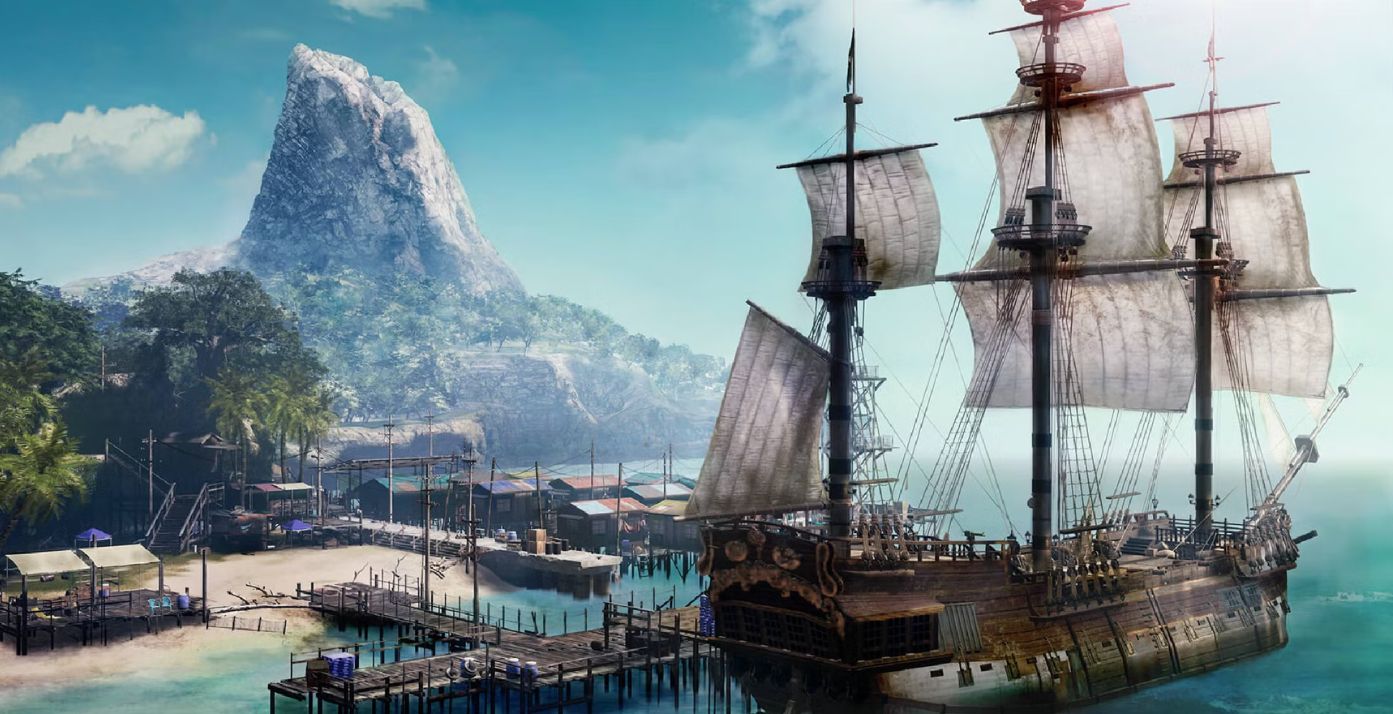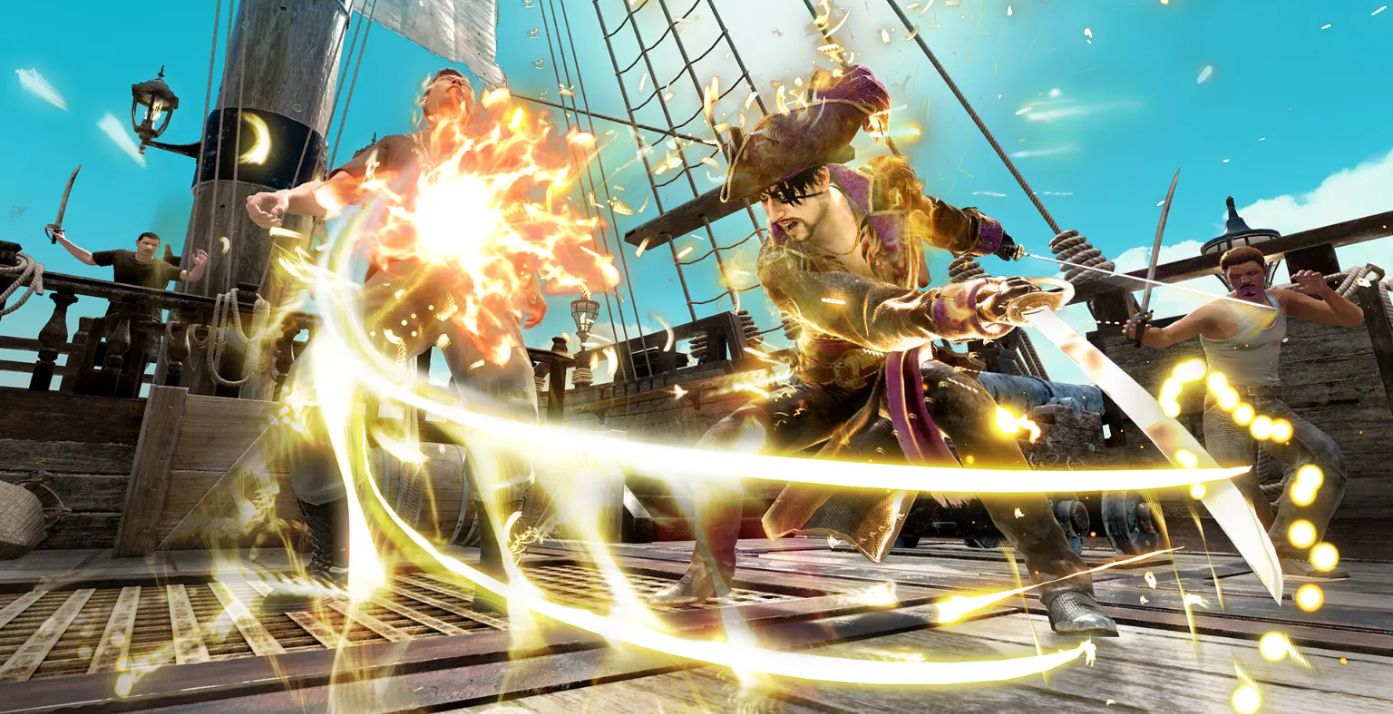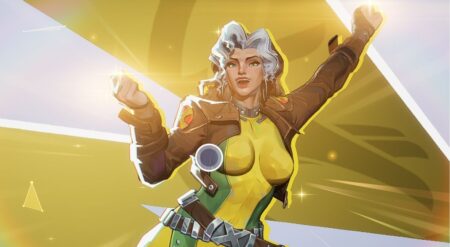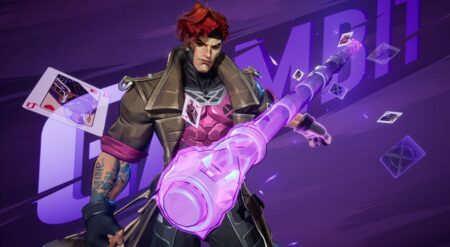Video games that focus on ship-based combat are not my bread and butter. Assassin’s Creed: Black Flag is my least favorite in the series, and I could never get into Sea of Thieves, no matter how many times I tried. I love the idea of playing as a pirate, but I’ve never found a pirate game that clicks. But the Yakuza Pirate naval combat does something different.
Still, I was skeptical when Like a Dragon: Pirate Yakuza in Hawaii was announced. I love the Like a Dragon world, but I knew there was no way I would enjoy the naval combat in the water that was sure to be a significant part of the game. Much to my surprise, Like a Dragon: Pirate Yakuza in Hawaii helped me overcome my distaste for ship-based games for a few key reasons.
The first thing that immediately softened my feelings about ship games is that the main character is Goro Majima. Majima is one of the wilder characters in the Like a Dragon world and is especially great in Yakuza 0, a game that features him as a second playable protagonist. He is a perfect fit for a pirate game since he is such an eccentric character.
Naval combat in this Like A Dragon spin-off is as absurd and fun as Goro Majima himself.

That choice fits perfectly with the decision to not allow Like a Dragon: Pirate Yakuza in Hawaii to take itself too seriously. One of the first moments on board the pirate ship Goromaru is spent fighting a chef with a comically large knife.
You’ve got characters dressed in varying degrees of “normal” clothes, although some get more bizarre as they go on. It feels like a bunch of freaks decided to become modern-day versions of old-school pirates. It’s a perfect combo that immediately endeared me to what the game was trying to do.
The ship combat itself is not trying to be an accurate simulator. Instead, it takes a more arcade-like approach that makes it easy to grasp. The tutorial is short and sweet, acclimating players to the limited controls, such as firing the cannons and machine guns, gaining speed boosts, and drifting around. As you upgrade the ship, these weapons can get more outlandish, adding to that arcade-style fun. I mean, who doesn’t want golden shark cannons?
Captaining the ship does not feel like a chore, and it isn’t overly taxing. But that doesn’t mean there is not a lot players can do. One of the key mechanics is leaving the wheel and roaming the ship mid-combat. This is used to either heal your pirates or fire an RPG at an enemy boat. It’s hard to explain just how fun it is to start launching rockets at an incoming ship, but boy is it a blast.
From there, you can also board enemy ships and engage in close-quarter combat. I absolutely adore the Like a Dragon beat ’em up action. It is so fluid and engaging, and it is no different here in Like a Dragon: Pirate Yakuza in Hawaii. Hopping aboard an enemy ship and letting lose with Majima’s swords and other pirate weapons is an absolute hoot. It is also a nice way to keep the combat fresh, never forcing players to only use their ship’s weapons.
Having a personal connection with your crew makes Pirate Yakuza In Hawaii naval combat stand out.

Combat and sailing around the seas of Hawaii are fun, but the best part is how personal Like a Dragon: Pirate Yakuza in Hawaii can be. Over 100 crew members can be recruited, and the ones you bring aboard can be interacted with. Building relationships with them by giving gifts has tangible benefits in battle, but it also adds a personal touch that helps me stay invested.
I typically can’t stand having to spend time recruiting allies and leveling them up in any way. I much prefer to stick to the main story, but the sheer magnitude of options and interactions here means there is always something new to discover. Like a Dragon: Pirate Yakuza in Hawaii made me care about these relationships by making them interesting, but also by using them to enhance the ship-based parts of the game.
While I’m not quite ready to jump aboard the next pirate game that comes out, Like a Dragon: Pirate Yakuza in Hawaii made me reevaluate my opinion of these types of games. I love how it refuses to take itself seriously while still delivering a polished experience on the water. The decision to go for style over realism is what makes sailing the Seven Seas so enjoyable, and it is something I’m going to keep coming back to when I get that pirate itch.








